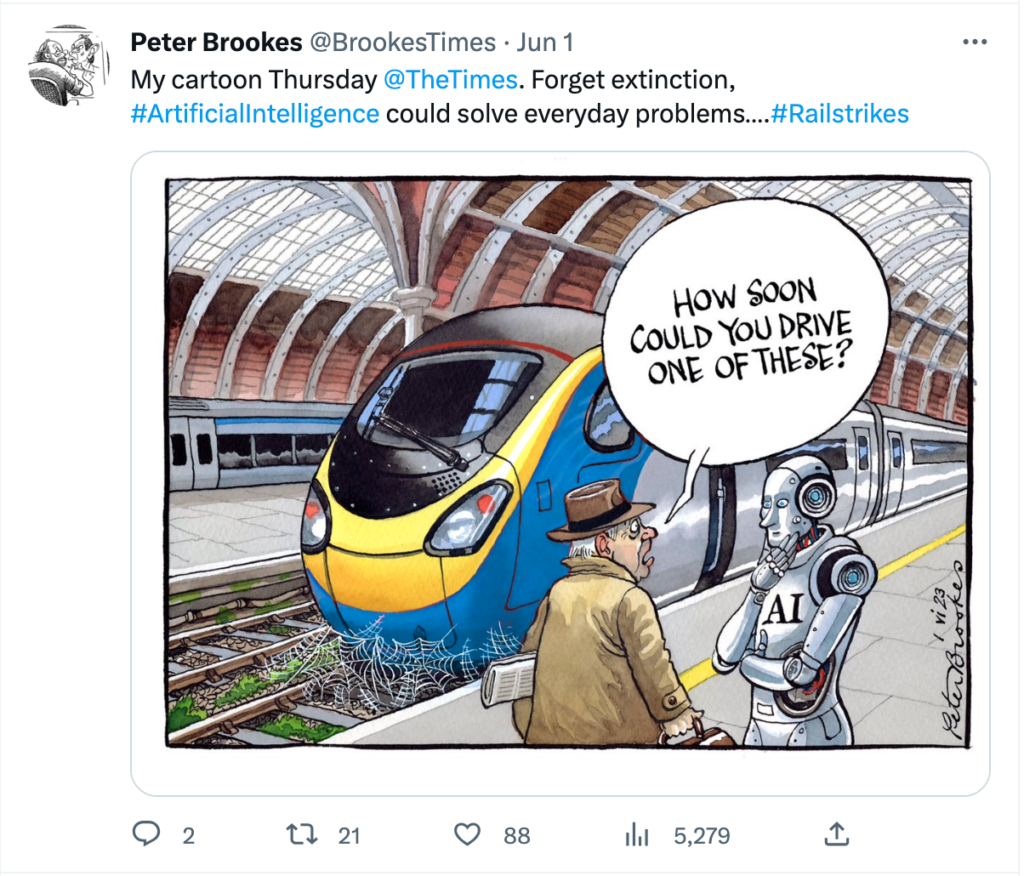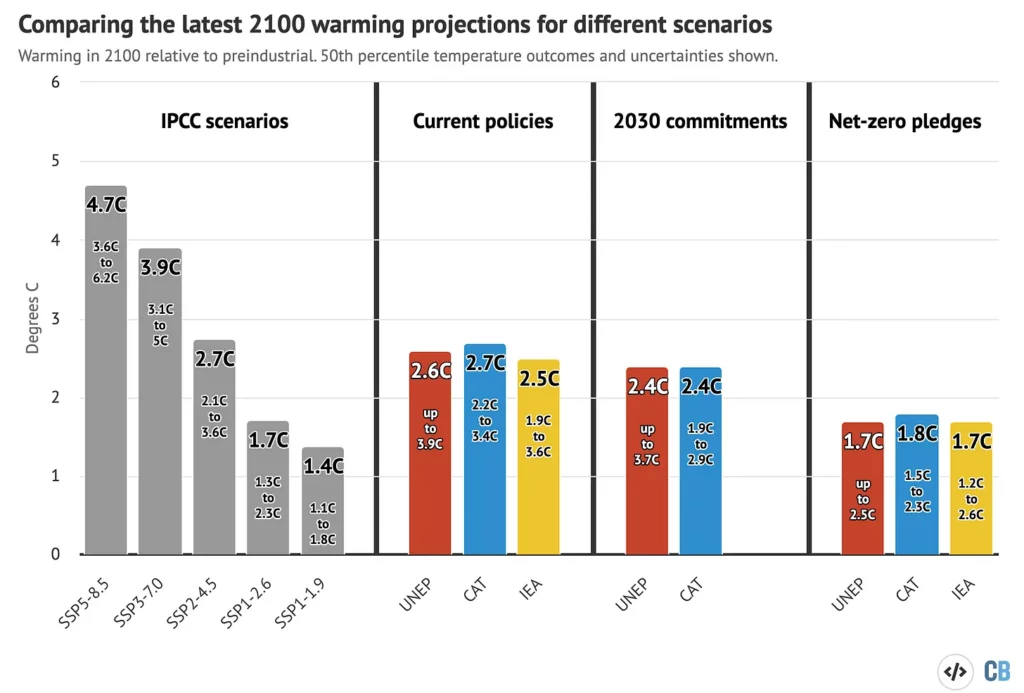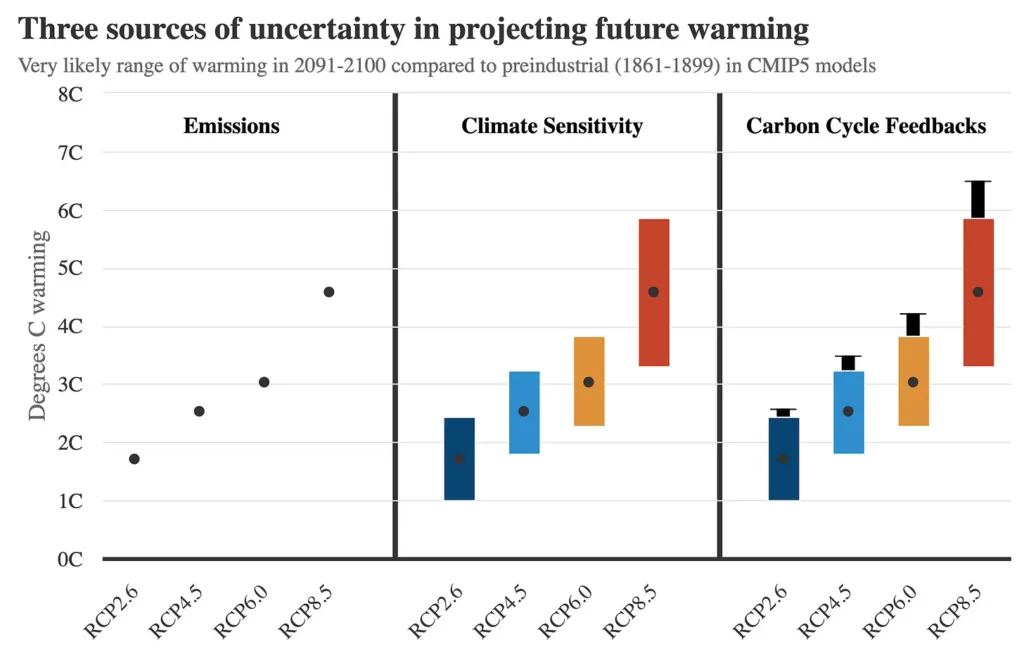How AI might help us avoid a climate apocalypse

• Carbon emissions no longer on worst case scenario curve.
• Data centers, cryptocurrency, chatbots still resource-heavy.
• AI has helped shine a light on the issue.
Articles about carbon emissions are always a bit of a downer, because apocalypses make excellent clickbait. We are all doomed – you know this, and as the articles pile up, you increasingly struggle to care.
But for the first time in years, the assumption that the sky is falling – or burning – could be wrong.
Carbon emissions aren’t following the predicted worst case scenario anymore. In the last decade, efforts to cut carbon have begun to take effect.
Between 2000 and 2014, global CO2 emissions had been increasing at a rate of 3% per year and global warming was on track to a worst case outcome.
And to quote every other tech article written this year, the rapid rise of artificial intelligence has caused big changes. In this case, it’s drawn our attention to data centers and their resource consumption.
As yet, OpenAI hasn’t revealed the extent of the ecological damage that training its GPT4 model caused – but we can assume it wouldn’t sit well in an Extinction Rebellion meeting.
It’s not that powering the all-knowing chatbots causes huge carbon emissions, but cooling the computers that power machine learning does. Air cooling systems were the norm for a while, but they aren’t the most efficient – or environmentally friendly – method of getting the job done.
Water is almost essential to cooling data centers. It’s more effective at dissipating heat than air, and water cooling significantly reduces a facility’s energy consumption. The scale of the water use is alarming, particularly at data centers in areas already dealing with water scarcity.
Consuming millions of gallons of water a day, data centers have cut back on carbon emissions, but still cause environmental damage. The water, once used, is often treated with chemicals that are harmful when reintroduced to the environment.
This isn’t a new issue: conceptually, data centers have existed since the 1940s. Their energy/water consumption has long been flagged as problematic. However, the rise of our soon-to-be-sentient overlords has got people talking about the issue anew.

AI is a scab! Screenshot taken from Twitter on 7 June 2023.
Luckily, technological advances and punitive pricing have made clean energy more common. The energy transition has accelerated as clean energy technologies became the cheaper option and there’s been a drop in global coal use.
YOU MIGHT LIKE

Carbon costing – the route to greener data centers
In 2022, worldwide spending on clean energy technologies was $1.1 trillion – up from $780 billion in 2021 – and similar, even higher spending is expected for this year. Thanks to the changes, we are no longer heading towards the worst case scenario of the planet getting between four and six degrees hotter by 2100 (which is as far as the projections seem to go, unless we count WALL-E).

Future warming projections in 2100 relative to preindustrial (bar shows central estimates, labels in the bar show the 90th percentile range) from the IPCC AR6 (left panel), as well as estimates from UNEP, CAT, and IEA for current policy, 2030 commitments, and net-zero pledges. Via https://theclimatebrink.substack.com/.
That said, our best bet is looking to be a planet getting around 2.6° C warmer – which still isn’t a great outlook. Even though CO2 emissions have been relatively flat since 2013, they’re in the middle of the road. The implication of this isn’t that the world is saved and the problem solved: even after net-zero is reached – and maintained – it’ll be millennia before there’s significant cooling.
Plus, emissions are only one of three uncertainties when assessing global warming. The other factors are:
- How sensitive the climate is to our emissions: a combination of physical processes that amplify warming from greenhouse gases.
- How the carbon cycle responds to our emissions and how that affects the ability of the Earth to take up a portion of what we emit.

Central estimates of warming in CMIP5 models for each RCP (left panel), range of climate system responses across all models (central panel), and estimated range when carbon cycle feedback uncertainties are included (right panel). Via theclimatebrink.substack.com
There’s no floor or ceiling on carbon emissions, but the progress we have made should be encouragement enough to convince a climate action sceptic that maybe it is worth trying a little bit to be better.
If we double down, the curve could be flattened further. Hell, there might even be a future for humanity on earth yet!









